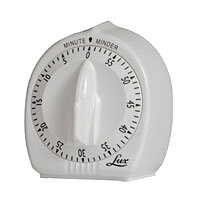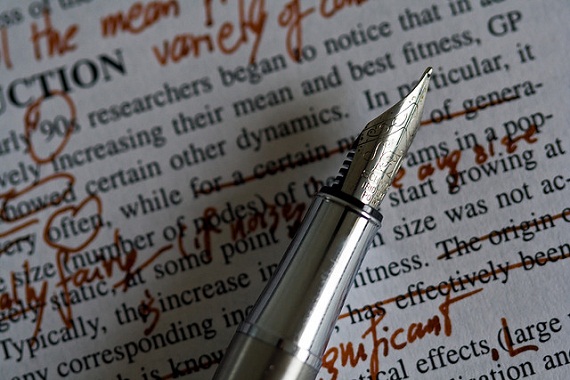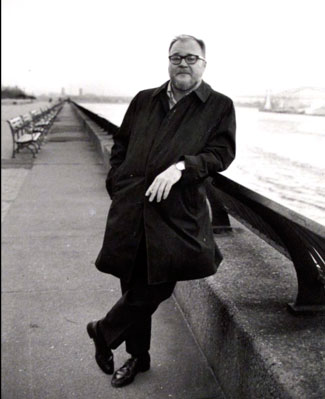Summer Starter 2015
Session II6-15-15
MSW Home
Sessions: One, Two, Three, Four
A Little Business
First, any notes you send me to give context to the selection or to ask questions, are not part of the word count. Notes are encouraged! They help me respond in a useful way.
Second, because papers are coming in at various times—some of you went to work as soon as Session I was posted, some of you worked right up the deadline—the homework/selections for review will be coming back at odd times. I may occasionally use samples of your writing, anonymously, to make points, but don't wait for your homework to come back to start the next session. The sessions are essentially free standing, although I hope they shed light on each other.
Third, do give me context when you are sending something that is out of order or from the middle. I respond very differently to something that is a beginning from how I respond to something that is in the middle.
One of the class members plunged in with some of the organizing suggestions from last time. She writes: "I got a new journal, labeled it, and keep all the exercises, log, etc. in it. I've put everything in the middle of the dining room table where I can't miss it!"
I especially like it that she has put it in her way so she can't forget about it! So please send notes and any questions you might have about process, exercises you found useful or not—or maybe a variation on an exercise that I can share with the whole group.
Revising from the Start: Change Is Constant
The Buddhist-style short version of this section is that everything is impermanent; nothing is unchangeable. This is an excellent philosophy for writers of prose narrative or any long form. You can continue to tinker (and make big changes) as long as you have access to your work and sufficient breath and brain cells.
The conventional wisdom (and I'm a purveyor of this myself) is that drafting should be done in a
different mind set from revision, and editing should be separate from both. In other words, while you may revise and edit forever, your initial efforts should be full speed ahead without pausing to critique your work. The thinking is that you don't want to do anything to get in the way of your creative juices, and you don't want to begin critiquing and undermining yourself when you are in the earliest stages of making it happen.
I still stand by that, but it is not, of course, that simple. Some writers really do best when they polish each section before they go ahead. The late, well-known writing teacher, Gordon Lish (father of the contemporary novelist Atticus Lish) used to teach seminars in which most of the session was spent working over one student's first sentence. You weren't supposed to go on till you had the opening sentence just so. I find that both fussy and extremely rigid. It also encourages linear writing, which is one perfectly fine style, but hardly the only one.
I'm one of the writers who drafts pretty rapidly, often to tell myself the story (and find the story). Then I go back and revise and edit.
But I've discovered that I'm not only that kind of writer. I'm also a writer who backtracks fairly frequently, often to find my way back into the rhythm of what I'm writing. Right now, I'm working in the final stages of a novella and with some effort trying to start a new novel. The new novel has been interrupted by multiple events and projects—including the novella. I often do some revision to get myself started.
More and more I think of revision as part of how a writer's imagination and creative process function—that it is part of starting as well as finishing. Consider, for example, how adding something can change a passage of prose and open it up to new possibilities. It's the opening up that seems especially valuable to me.
Here are a couple of exercises for revision-as-a fresh start, one to start something completely new and one for enriching an ongoing project.
Exercise One: Find something you wrote at least five years ago—even something from your teen years or childhood. Pull it out and either (a) skim over it, then write it again without reference to the existing text or (b) take what's there and start writing from the middle, giving it a new ending.
Exercise Two—The Monkey Wrench: If you are feeling stale or having trouble getting back into a project or a chapter, or even a scene, throw a monkey wrench
into the works. This is especially good for writing or restarting a novel.
Go forward in your story to a part you haven't written yet and have something unexpected happen. It's important that this unexpected thing not be part of the plot, but some outside event: weather, for example, works well. You might have a snowstorm just at the wrong moment, or a fender bender as the hero is hurrying to meet the heroine, or a terrorist attack happens (or some historical event), or someone comes down with the flu. How does this change the story? How do the characters react? What do you (and the reader) learn?
Many people, including me (as I mentioned above), often use a little revision to start the day's work. By going over the end of what I wrote yesterday, cutting excess words, adding a bit of dialogue, I am pulled back into the world of my project. The trick is to avoid obsessing over small things (at this stage) and not to spend the whole writing session on improving the old stuff.
Yes, you have to revise, yes you should probably revise many times, yes revising can get you rolling. But also, yes, revision can be so engrossing in itself that you don't move on to the next, raw, difficult, unknown thing.
Exercise Three: Start your writing session with a little warm-up revision, but instead of working in your usual way, set that kitchen timer for ten minutes. Pick a section, a paragraph? a page? and then pick a number: 10 or 30 or 15 or more. Go over the section and cut the number of words you picked. Is this arbitrary? Of course. Is it brutal? Maybe. Does it work for tightening? Give it a try and find out.
Exercise Four: Here's another arbitrary revision warm-up to start the day: Take a character you haven't completely figured out yet, or one you are having trouble with. Go to a section where that character appears at some length. Make some major changes in that character's appearance and basic characteristics.
That is, change hair color or age. Give the character glasses or a Yankees cap. Maybe change him to a her. Try revising the passage in light of the changes. What happens? If you're lucky, you'll get new insight or even a new version of the character. Exercise Five: Do a search on line for some word or phrase (or place of career or weapon) that you use in your story. Change the search for the word of phrase to "images." Find an image that seems to fit, and describe it in words, find a place in your story to insert your description based on the image.
Mainly, of course, you need find what works for you. Also, I would suggest, occasionally try something different, just to freshen your techniques and see what comes up. One of the reasons I'm a great believer in in-class exercises in face-to-face classes and doing the short exercises in this online course, is that sometimes something different pops up when the writer is out of her or his comfort zone.
A Story about How Revision
Got Me to Finish My DraftIn Fall 2013 I took a trip to make an appearance in the southern part of my home state, West Virginia. While I was there, I got a compelling idea for a story, and when I got home I drafted rapidly in my usual way, creating characters, a plot. It was soon pretty clear to me that the story was not going to be a full length novel although certainly longer than a short story—maybe a novella, 30,000 words or so. I drafted fast, and by the winter holidays, I laid it aside, as I almost always to, and went back to other projects. Ordinarily, the way I work is to lay something aside for a year or even more and come back to it fresh and with many fewer attachments to particular names or events. I can usually then do a full revision with clear eyes.
This time, though, I found I wanted to share the beginning with my writers' peer group. (Note: If you don't have a group of people to meet with and share support and mutual critique, try to organize one!) I'm not usually so eager to show unfinished work, but I thought I'd offer just the opening, setting and the set-up.
There were a lot of questions. My group didn't get the setting, didn't understand some things that seemed obvious to me. They liked my narrator and other things. They asked the questions people have as they figure out how to enter into—how to read—something. I went home, and tinkered a little, mostly clarifying.
I tinkered for an hour, and suddenly was into the story again, with fresh ideas, doing what I call "deep revision," which is delving down and overturning new ideas, new scenes. I had other things to work on but I began to take a few pages every time our group met, which is every two weeks during the school year. Every time, the day before the writers' group met, I would get out a passage of the story, still very raw, and go over it, mostly tightening and cutting. Sometimes I did another round of cutting on on the hard copies I was going to hand out, scribbling away as I rode the train into the city. The group was enthusiastic, once they'd gotten into the swing of the story (or maybe once I'd figured out what practical information and grounding was needed to present Southern West Virginia to my New York writer pals).
The day after presenting to group, I'd spend at least an hour on the computer putting in changes they'd suggested. Then I laid it aside for another two weeks.
I'd never used this method before—I usually keep my writing very close to me until I feel it is well on its way to being finished, and this story was not—still is not quite finished, either. Group just ended for the summer, but I'm very close now to having a solid draft to work on.
One of the group members, NK, said how much she liked it, then added, "I won't go into telling you how some of what you had leading up to [the climax] was slow and draggy because you seem to know, and anyway, it was an interesting glimpse into your process, seeing what you put down before you know you can remove it...."
There was a time in my life when I would only have heard the negative in a comment like that—that NK had seen my rather limp early draft and recognized that it was limp—but this time, it felt like exposing my process was a good thing, and that this more communal revision was actually working for me.
We often write our way to understanding of what we are after: we put down extra description, we narrate around the bush, looking for the point. We write dialogue that includes much too much phatic conversation which is realistic but boring.
Exercise Six: Pick a few very raw pages and read them aloud to a friend. The listener doesn't have to be particularly literary. Just hit them with the raw story and get a quick reaction. Look for questions of fact, confusion. "Oh," says the listener. "I wondered how old he was. He sounded like a teenager." Take notes. A day later, try to answer the listeners's questions.
More Deep Revision
At its simplest, deep revision is simply what you do between drafting and polishing, which, if you think about it, is almost everything. The biggest thing about this kind of revision, in my opinion, is not to think of it as "correcting" (as high school students do) or as "fixing what's wrong," (more high school thinking), but rather as an opportunity to go into whatever inspired you to write the piece in the first place.
You get to return to the world of your story and find scenes you missed, characters who you only now get to know well. It isn't about finishing or perfecting, but about re-experiencing your story an d maybe finding what's missing, or what might be used—paths through your material that you hadn't noticed yet.
Exercise Seven—Sitting on Your Hands: One way to approach this going deeper, is to take a project that is well on its way and do a read through, a section or chapter at a time, while sitting on your hands. Okay, I mean that figuratively, but the idea is to force yourself to read but not to revising till you've read it all, as a reader. Once you've read the entire passage, then write your reaction to it, or add something you thought was missing: the answer to a question, something the character should be considering before his next move; a memory she has.
Exercise Eight: Another technique for going deeper without doing a full throttle line by line revision, is to go through a section (or a whole manuscript, if you have a draft) doing a search for one character or one place. Read carefully how you have introduced the entity; Do you need more or fewer details? Does this separated out reading give you new ideas for how to use the character? For what might happen at the place?
Exercise Nine: Copy and paste the following poem into a chapter in the middle of your project. This is a milder version of the Monkey Wrench above. Usually, it works especially well for something you are having trouble with, or something you haven't written yet. In other words, if it's going great, let it keep going!
So copy and paste the poem into your text, cutting away all but the lines that seem most meaningful to you. You might give some of its lines, or maybe just phrases, to a character, or put it in your description. If this poem doesn't work for you, choose a passage from a prose work you admire ("It was the best of times, it was the worst of times...") I once used a Kafka parable to enrich a science fiction story. In any case, the idea is to put someone else's words into the middle of your project, and revise them so they disappear into your story, but giving extra depth and meaning to your story and characters.
"Lying in a Hammock at William Duffy's Farm in Pine Island, Minnesota"
By James WrightOver my head I see the bronze butterfly,
Asleep on the black trunk,
Blowing like a leaf in green shadow.
Down the ravine behind the empty house,
The cowbells follow one another
Into the distances of the afternoon.
To my right,
In a field of sunlight between two pines,
The droppings of last year's horses
Blaze up into golden stones.
I lean back, as the evening darkens and comes on.
A chicken hawk floats over, looking for home.
I have wasted my life.
Main Assignment
Choose a scene you haven't written yet or have had a problem with. Start it over afresh and write from the beginning, consciously over-writing. That is, double the amount of description, looking for salient details that might give you more ideas for plot and story. Make the dialogue go on half again as long as you thought it might. Does something new come up? Include extra internal monologue or narration.
Now lay this aside for a least a day. Come back to it and cut, cut cut, tighten as much as you can. With a little luck, you'll have found new material, perhaps a new direction for some character's trajectory.
P.S.
If you don't receive back your homework from Session I (NOT Session II) by Friday, June 19, e-mail me to see what happened.
P.P.S.
One class member wrote a question about rejection letters:
"I know many are case-by-case and that you cannot know what editors are thinking (!!!!), but if the note tells you to submit again and that the editors could not come to a consensus about your work, is that a decent sign? Or is this boilerplate? Just curious in general. And, if you have ever been rejected and were asked to try submitting again, have you?"
I take very seriously editors who ask you to submit again. Very good sign. They are not looking for extra submissions, so they probably mean they are interested in your work if they say that. I have certainly tried again when invited. Use any tiny advantage you can! Publishing is a tough world.
***
Subscribe to Meredith Sue Willis's Free Newsletter
for Readers and Writers:
Images and photos found on the various pages of this web site
may be used by anyone, but please attribute
the source when it is specified.
This work is licensed under a Creative Commons Attribution-NonCommercial-ShareAlike 3.0 Unported License.




